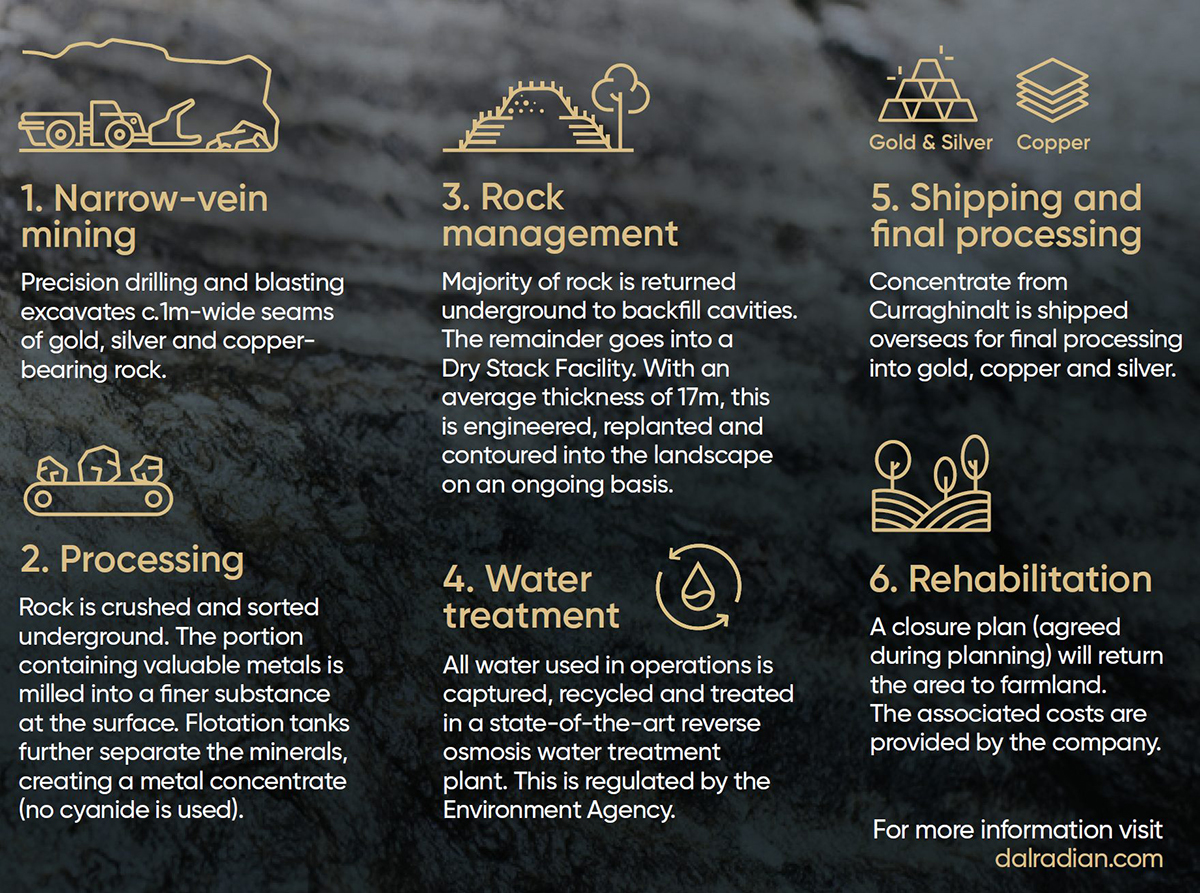Shipping & Refining
Perhaps the best way to understand Dalradian’s project is to compare it to a hi-tech, highly regulated, precision-led quarry – only one that is based underground with some processing on the surface.
There are six stages to Dalradian’s approach. The fifth is ‘Shipping & Refining’.
Completing the transformation
During the planning process Dalradian listened and changed its proposals with the aim of becoming Europe’s first carbon neutral mine. We also reduced the amount of processing required at Curraghinalt by removing the use of cyanide. This means that the mineral concentrate produced by processing on site needs to be transported overseas to finalise the transformation of microscopic ore from the Sperrins into recognisable gold and silver bars, and copper sheets.
Although the final destination of the concentrate is still to be decided, there are a number of well-established smelters in continental Europe and North America which already process concentrate from around the world. To get there, sealed bags of concentrate in containers will leave Curraghinalt by road in covered lorries (around three a day) to a port where it will be shipped overseas. A similar approach is used by Tara Mines in Meath which ships its concentrate to Scandinavia.
Separating the concentrate into gold, silver and copper is achieved through ‘refining’, a process which traces its origins back thousands of years. Refining at modern smelters is, of course, much more sophisticated and highly regulated, but it is based on the same principles of using heat and other agents to remove impurities from the concentrate. This helps separate the concentrate into its valuable end products, each of which might undergo further specialist refining.
Dalradian’s proposal for Curraghinalt will produce 15,000 tonnes of copper, 3.5m ounces of gold and 850,000 ounces of silver – metals which are highly sought after because of their versatility.
Gold, silver and copper are known for their usefulness in electrical circuits. Today they can be found in everything from mobile phones to laptops, electric vehicles and for medical purposes, as well as emerging renewables technology which will be crucial to reducing global CO2 emissions.
For more information visit dalradian.com or check out our social channels.
Facebook, Instagram and LinkedIn









